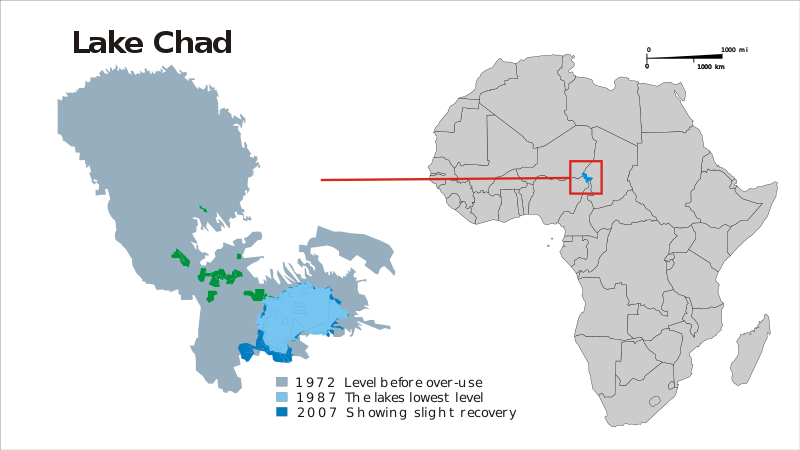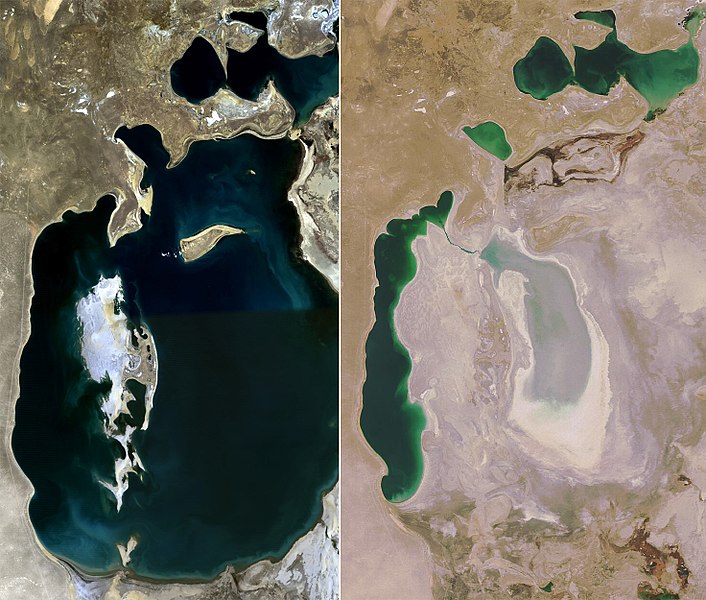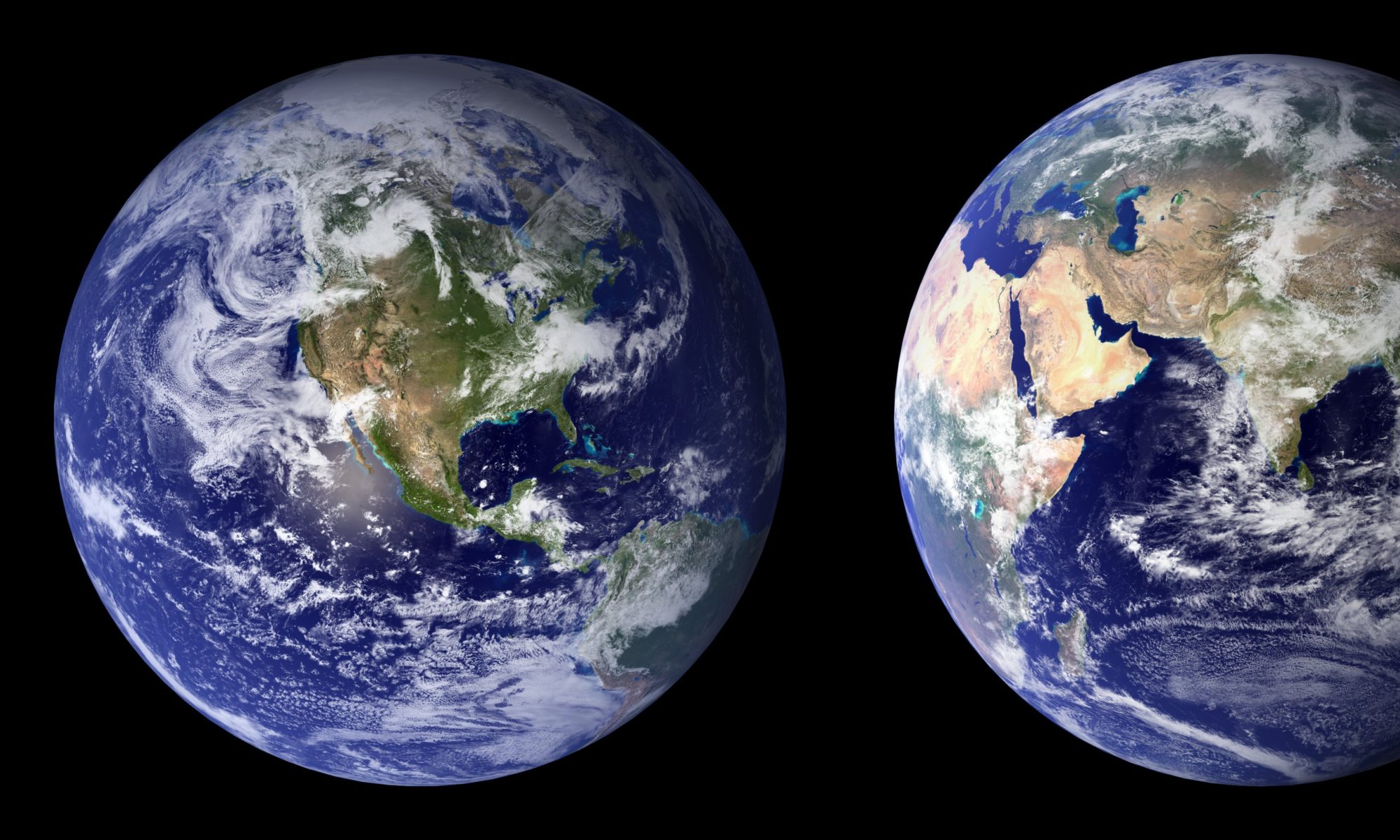

Worse, as global population 8 and food insecurity 9 grow, and as the frequency of droughts increases, dependence on groundwater can only rise with already arid regions like South Africa likely to be hit the worst 10.
The scale of depletion is colossal, particularly given the large time periods required for replenishment. For example, in just one year across 3 Indian provinces, the net groundwater loss was twice the capacity of India’s largest surface reservoir 11. That is equal to roughly 109km3. That’s kilometres cubed, not squared. Imagine a cube 1km high, 1 km wide and 1 km deep in front of you. Times that by 109. That’s a hell of a lot of water in just one year for just 3 regions of a country. And this is by no means an isolated case. Large scale groundwater depletion has been observed to occur in the Middle East, China and the Americas among others.
The small consolation is the immense size of groundwater reserves, although actual figures for the total storage are notoriously difficult to calculate. In the case of those Indian provinces, even with that rate of depletion, it will be several decades before water shortages are experienced. But when they are experienced, certainly by the end of the century, over 100 million residents will be affected 11. And that’s not to mention the global impact of reduced agricultural output, resultant food shortages, economic migration and the other socioeconomic stresses this entails. Globalisation has caused national economies to be inextricably intertwined. If one of the global bread-baskets fails, it affects everyone. When food shortages occur, food prices go up and that affects the most vulnerable the hardest. This can cause social unrest and perhaps, if the underlying socioeconomic conditions are right, trigger conflict.
In 2010, forest fires (attributed to climate change 12 I might add) destroyed a third of the Russian wheat crop, resulting in a rise in global food prices that helped bring about the unrest which triggered the Arab Spring 13.
Clearly, the combination of climate change and groundwater depletion is a potent and deadly mix. Fortunately it is a problem we understand and, unlike climate change, we have time to reverse it. With foresight and good, sustainable, management policies, governments can ensure that we have water for centuries to come. And ordinary citizens can contribute too. Don’t waste water. Use only what you need. Eat less meat (meat requires huge quantities of water to produce the same calorific value as plants). Small acts performed by millions can and will make a difference. The time to start is now.
References
Cover Image: By suburbanbloke [CC BY-SA 2.0 (https://creativecommons.org/licenses/by-sa/2.0)], via Wikimedia Commons
3. Döll, P., Hoffmann-Dobrev, H., Portmann, F.T., Siebert, S., Eicker, A., Rodell, M., Strassberg, G. and Scanlon, B.R., 2012. Impact of water withdrawals from groundwater and surface water on continental. [online] Available at: https://www.sciencedirect.com/science/article/pii/S0264370711000597 [Accessed 3 Mar.2018]
4. Siebert, S., Burke, J., Faures, J.M., Frenken, K., Hoogeveen, J., Döll, P. and Portmann, F.T., 2010. Groundwater use for irrigation–a global inventory. Hydrology and Earth System Sciences, 14(10), pp.1863-1880. [online] Available at: https://www.hydrol-earth-syst-sci.net/14/1863/2010/hess-14-1863-2010.html[Accessed 3 Mar.2018]
5. Dalin, C., Wada, Y., Kastner, T. and Puma, M.J., 2017. Groundwater depletion embedded in international food trade. Nature, 543(7647), pp.700-704. [online] Available at: https://www.nature.com/articles/nature21403[Accessed 3 Mar.2018]
6. Famiglietti, J.S., 2014. The global groundwater crisis. Nature Climate Change, 4(11), pp.945-948. [online] Available at: https://www.nature.com/articles/nclimate2425[Accessed 3 Mar.2018]
7.UNEP, n.d., Lake Chad. Environmental Change Hotspots. Division of Early Warning and Assessment (DEWA). United Nations Environment Programme (UNEP). [online] Available at: https://na.unep.net/atlas/webatlas.php?id=2176 (Accessed on 05.03.18).
8. Jasechko, S. and Taylor, R.G., 2015. Intensive rainfall recharges tropical groundwaters. Environmental Research Letters, 10(12), p.124015. [online] Available at: http://iopscience.iop.org/article/10.1088/1748-9326/10/12/124015/meta[Accessed 3 Mar.2018]
9. MacDonald, A.M., Bonsor, H.C., Dochartaigh, B.É.Ó. and Taylor, R.G., 2012. Quantitative maps of groundwater resources in Africa. Environmental Research Letters, 7(2), p.024009. [online] Available at: http://iopscience.iop.org/article/10.1088/1748-9326/7/2/024009/meta[Accessed 3 Mar.2018]
10. Taylor, R., 2014. Hydrology: when wells run dry. Nature, 516(7530), pp.179-180. [online] Available at: https://www.nature.com/articles/516179a[Accessed 3 Mar.2018]
11. Rodell, M., Velicogna, I. and Famiglietti, J.S., 2009. Satellite-based estimates of groundwater depletion in India. Nature, 460(7258), p.999. [online] Available at:https://www.nature.com/articles/nature08238[Accessed 3 Mar.2018]
12. Hansen, J., Sato, M. and Ruedy, R., 2012. Perception of climate change. Proceedings of the National Academy of Sciences, 109(37), pp.E2415-E2423. [online] Available at: https://www.ncbi.nlm.nih.gov/pmc/articles/PMC3443154/[Accessed 3 Mar.2018]
13. Baragona.S. (2011). 2011 Food Price Spikes Helped Trigger Arab Spring, Researchers Say. [online] Available at: http://www.voanews.com/content/article-2011-food-price-spikes-helped-trigger-arab-spring-135576278/149523.html [Accessed 5 Mar. 2018].

